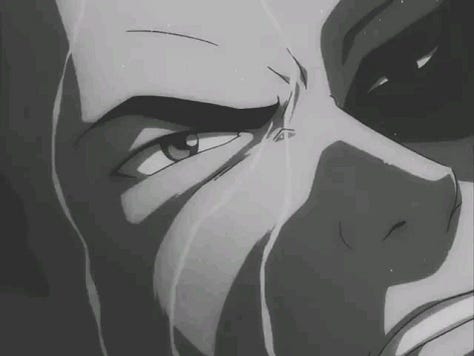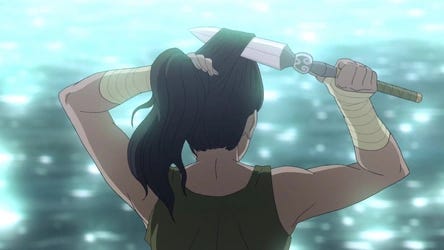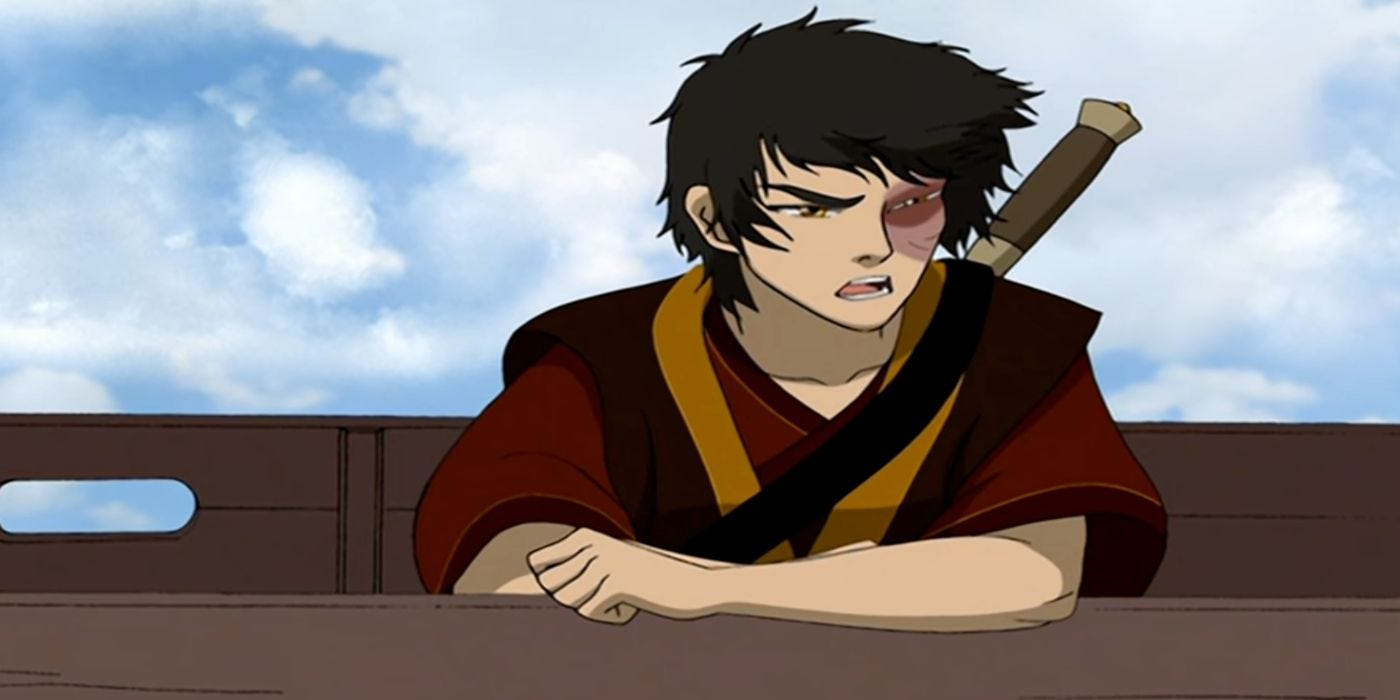🧠 TL;DR:
Your life is already a myth, you just haven’t named the archetypes yet.
Your childhood pain wasn’t failure; it was initiation.
The characters you obsessed over weren’t random. They were soul parts.
Roleplaying them isn’t escapism. It’s shadow work in costume.
🔹 1. Your Childhood Story = Your Origin Myth
You’re not just healing a past. You’re decoding a myth in motion. Hermes says identity is not a fixed box, but a shapeshifting theatre. Which means your childhood wasn’t just “stuff that happened to you.” It was the opening act of your personal myth. These are the patterns and scripts we get stuck in. For most people who are running on the Kronos.exe trauma loop bug script, this generally installs the scapegoat-external hero starter pack. To find out your version of it, ask mythic questions:
Who was the tyrant?
The school system? Your parents? What is the source of your own inner critic?Where were you exiled?
Emotionally neglected? Bullied for being weird? Sent away to “behave”?What trial did you face alone?
Illness, neurodivergence, gender dysphoria, parental loss, spiritual hunger?
💡 Example: Korra from Legend of Korra
After Zaheer poisons her, she’s haunted by PTSD, powerlessness, and disconnection from her past selves. Her mythic wound isn’t just “being poisoned.” It’s the fall from identity, the collapse of the self she built. She had to reconnect with herself, and with the help of Katara and Toph start on a long healing journey. This journey of hers also connected to book four, with the rise of Kuvira.
🔹 2. Comfort Characters = Shadow Keys
You know those characters you were obsessed with? The ones you drew fanart of, wrote fic about, or lowkey wanted to be? They weren’t random. They’re fragments of your own myth, sent ahead of you like scouts. They’re the expressions of parts you had to hide to survive. They can be both shadow figures, yet also connected to other figures such as romantic figures. Either way we project our repressed shadow traits onto these figures, next to the other half of the qualities that are normally seen as “other”. Think qualities you idealise in others. That you project onto them.
🧨 Ask Yourself:
What does this character express that I repress?
What emotional truth do they carry that I was never allowed to?
What part of me wants to speak through them?
Cosplay, fanfic, comfort characters? Not escapism. Sacred soul alchemy. Your comfort characters serve two purposes. They mirror the parts of you, that you had to suppress, reject, or exile. They can foreshadow the healed, reintegrated form of those parts. In Jungian terms: they are Shadow projections, but not in the simplistic “what you hate in others = what you hate in yourself” way. Rather, they are longing shadows, aspects of the Self that your conscious personality couldn’t embody safely, so they show up in fiction as external obsessions. Let’s myth-map a few:
🩸 Dean Winchester (Supernatural)
Who he is: A demon hunter raised by a broken father after his mother was killed. Raised to protect his little brother at all costs. Hyper-competent, emotionally repressed, and deeply terrified of abandonment.
If you latched onto Dean, maybe your myth starts with self-abandonment as a love language. You became the protector because no one protected you.
Dean was four years old when his mother was killed by a demon. His father, John Winchester, became obsessed with revenge and turned Dean into a little soldier. He was told to "watch out for Sammy" and raised like a recruit in a war. He never had space to grieve or be a child. His identity fused with protection. Every time someone left, his mother, his father, eventually even Sam, it reactivated the belief: “If I don’t hold it all together, everyone dies.” He became the protector not by his choice, but because there was no one else. Exiling vulnerability and need for protection.
Trauma themes:
Parentification: Became a surrogate parent too young.
Emotional enmeshment: Identity collapsed into others' needs.
Love as sacrifice: Believes he has to suffer for others to prove he's worthy.
Why you latched on: Dean is the part of you that had to be okay so everyone else could fall apart. Which means you weren’t given protection, so you either became it, or are still longing for it. You loved through silence, action, sacrifice. Your soul myth may start with: “I am the shield no one held up for me.”
What he teaches you to integrate:
Boundaries are not betrayal.
Vulnerability doesn’t break connection, it builds it.
You don’t have to burn to keep others warm.
🔥 Zuko (Avatar: The Last Airbender)
Who he is: A prince banished for speaking out of turn. Desperate for his father's approval. Carries shame, anger, and identity confusion. Constantly torn between who he was told to be, and who he truly is. Seeks honor and loses himself. he only finds peace when he stops chasing approval. Exiling healthy anger and authenticity.
Zuko kids grew up trying to earn love from someone who made it conditional. His firebending healed when his identity did.
Zuko was a royal child with a fierce, compassionate spirit. But when he dared speak out against a general’s plan to sacrifice soldiers, his father, Fire Lord Ozai, punished him with public humiliation, a facial burn, and exile. He was told he could only come home if he captured the Avatar.
Trauma themes:
Conditional love: Acceptance only if he conforms.
Internalized shame: Sees himself as broken.
Disowned fire: His power becomes destructive until reclaimed.
Why you latched on: You grew up chasing love that moved the goalpost. You kept shapeshifting to be “good enough.” It also then means you had a parent figure who weaponized love. Tying your self-worth to performance, achievement, or obedience. So you struggle with anger or shame and didn’t know where it came from. You felt “banished” emotionally, even if never physically. Think emotional neglect. Zuko is the soul who says: “I wanted to be angry and heard.”
What he teaches you to integrate:
True honor comes from self-trust, not obedience.
Rage is not evil, it’s misdirected grief.
Healing the inner fire means no longer needing to prove your worth.
Need for belonging.
⚡ Sonic & Shadow (Sonic the Hedgehog)
Who they are: Sonic is a speedster hero who never slows down. Joyful, impulsive, always moving. Where shadow is an experimental clone made in grief. Brooding, powerful, isolated. Haunted by death and memory.
These two together represent the Speed & Stillness myth.
Sonic is constantly in motion. He’s heroic, playful, and really thrives on speed. But his relentless movement is more than personality, it can symbolise emotional avoidance. He literally outruns problems. In the rare moments he’s still, he’s uncomfortable. It’s the ADHD-coded myth of “If I stop, the pain catches me.” If you’re neurodivergent, particularly ADHD/autistic-coded, or you deal with avoidance or overthinking, this resonate. The Speed vs Stillness myth also symbolises dissociation vs depression.
Shadow on the other hand was created in a lab as the “ultimate lifeform,” but his backstory is pure tragedy. He bonds with a girl named Maria, who is then murdered. Shadow is sealed away for decades, waking up with grief as his first emotion. He has trust issues, identity confusion, and a cold, distant demeanor masking enormous sadness. They are a mirrored myth. Sonic is dissociation by speed. Shadow is isolation by grief. One runs from the pain. The other is the pain. Exiling trust and grief.
Trauma themes:
Sonic: Avoidance through constant motion. ADHD-coded escapism.
Shadow: Identity crisis, abandonment, survivor’s guilt.
Why you latched on: If Sonic called you, slowness felt like death. Stillness was when the pain caught up. If Shadow pulled you in, you’ve been frozen in grief, unsure who you are beyond it. You might use distraction, humor, or chaos to avoid feeling. And grew up in an unstable environment and kept “moving” to feel safe. So you might struggle to let people in, but you desperately want to be known. This is really about the deep need for “I needed someone to stay.”
What they teach you to integrate:
Movement is sacred, but so is presence.
You can be fast and feel.
Stillness won’t kill you. It might set you free.
🌊 Korra (again)
Who she is: The Avatar, reincarnated soul-bridge between worlds. Physically powerful, deeply independent. Suffers poisoning, PTSD, and spiritual disconnection. Her healing journey is slow, emotional, and lonely. So a physical powerhouse who suddenly can't fight. Disconnected from legacy. Has to feel instead of fix. Exiling helplessness.
Korra is a soul initiation myth about losing the version of yourself that could survive everything. Now? You have to feel it. And it sucks. And it’s real. This is for all who have been poisoned (emotionally or physically) or spiritually disconnected.
In the story Korra could not connect to her past lives anymore. Her sense of identity, once rooted in strength, shattered. Her healing is slow, internal, and lonely. She goes from hero to hermit, eventually finding healing in vulnerability, feeling, and slowly re-learning softness. If Korra is your anchor, maybe you were always the strong one, until you couldn’t be. You have lost the “version” of yourself that survived everything, and do not know who you are now You are terrified that your softness means failure. (side note: It doesn’t.) Korra’s arc here is the soul-initiation collapse. It’s what happens when your coping strategies stop working, and you meet the raw truth beneath them.
Trauma themes:
Power collapse: Loses what made her feel strong.
Disconnection from legacy: Can’t hear her past lives. (think past, or child self)
Emotional suppression: Physical training can't solve spiritual pain.
Why you latched on: Maybe you were the strong one, the fighter, the fixer, the one who could always “handle it.” But something happened that cracked that identity. And now you are not sure who you are without the feeling of control. Korra’s soul myth is: “I feel unsafe when I’m not in control.”
What she teaches you to integrate:
Feeling deeply doesn’t make you weak.
Legacy is lived, not inherited.
It’s okay if you can’t fight right now. You’re still you.



Yet these characters aren’t just reflections of what hurt you. They are archetypal masks for who you’re becoming. They are dream-coded blueprints sent to help you survive, and then rebuild.
Let the traits you admired in them wake up in you:
Dean’s fierce loyalty without martyrdom
Zuko’s reclaimed fire without shame
Sonic’s joy without avoidance
Shadow’s strength without isolation
Korra’s presence without the need to prove
These aren’t personalities. They’re pieces of your soul puzzle. You’re not stealing them.
You’re remembering yourself. Writing as them. Dressing as them. Monologuing in the mirror. That’s not escapism. That’s ritual drama. Ancient initiates used such masks and costumes to channel gods. You’re doing the same, but your “gods” are characters infused with your soul-wounds and gifts. You can watch them, grieve with them, or even feel sadness and grief about their past. This is a safe way to slowly touch upon your own inner wounds, without too direct exposure yet.
If it feels cringe?
That’s Kronos.exe running WhyAmICringe.exe again.
Just update the OS. Hermes runs on ShapeshiftOS 3.0 now. Shadow work is cosplay for the initiated. I highly recommend to make a list of your comfort characters and look at their traits, wounds, stories and arc. What resonates so much? The few I listed are just a few of many characters out there. Happy comfy hunting. 🦊
👨🏻💻 Practical Steps
Write your origin myth.
Make it mythic. No “my dad yelled at me.” Try:
“The tyrant king banished me for breaking the sacred code of silence.”List 3 characters that held you.
Not just favorites, actual obsessions. The ones you projected onto hard.Decode their soul-key.
What did they let you feel that you couldn’t in real life?Perform the myth.
Write a dialogue between them and your inner child.
Dress as them and journal.
Voice memo a message from them to you.
Look for the Hermetic threads.
Identity is a play. The point isn’t to become the character. It’s to find the you inside them. What is your OC?
Your Personal Myth is not something you invent. It’s something you remember. It’s not childish to love them. It’s not cringe to speak as them. It’s initiation through your imagination. It is important to look at such comfort characters, to look at the friends you used to relate to the most. The ones you lost, the ones you loved deeply, the ones that are there now. What is your story? What is your myth? If you are trying to find out, you can also just write key story beats from your life. What are the main key events. What did it make you feel? The good, the bad, the ugly.
🧬 Soulware 3.1.1 Patch Notes — “Trickster Integration” Update
🔄 System Upgrades:
🦊 ShapeshiftOS 3.0 kernel now fully supported. Hermes drivers updated for faster transmission between timelines, masks, and moods.
💡 Trickster Protocol unlocked. Allows users to swap fixed identities for archetypal roleplay. Compatible with dreams, memes, and mythos.
🎭 “Comfort Character Sync” enabled. Soulware now scans your favorite fictional characters to locate hidden soul fragments. Integration assistance available via cosplay, journaling, and crying at 2am.
🧠 Cognitive Enhancements:
- Shadow Rendering improved. Shadows now appear in high definition when you stop projecting and start integrating.
🐞 Bug Fixes:
- Fixed a glitch where soul kept seeking external validation.
- Patched infinite loop where inner critic masqueraded as “being realistic.”
- Addressed rare bug where users believed they were broken. Reminder: you’re just mid-transformation.







